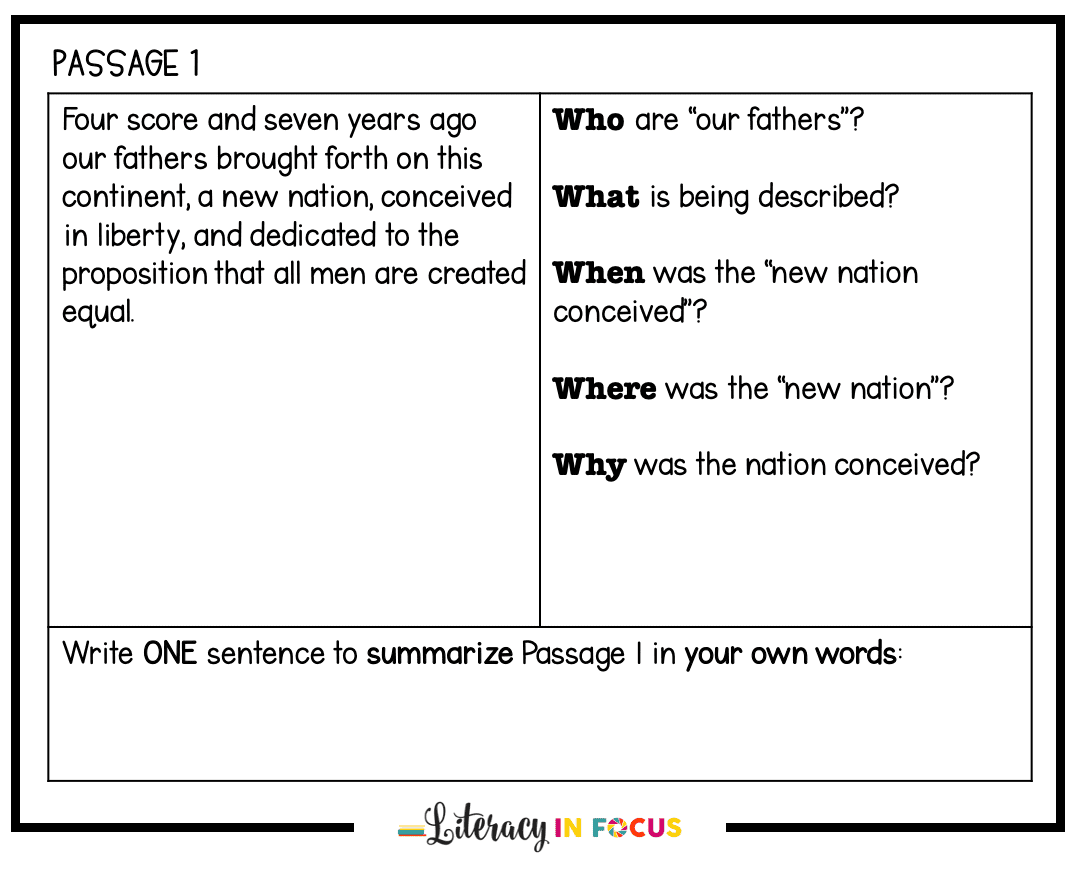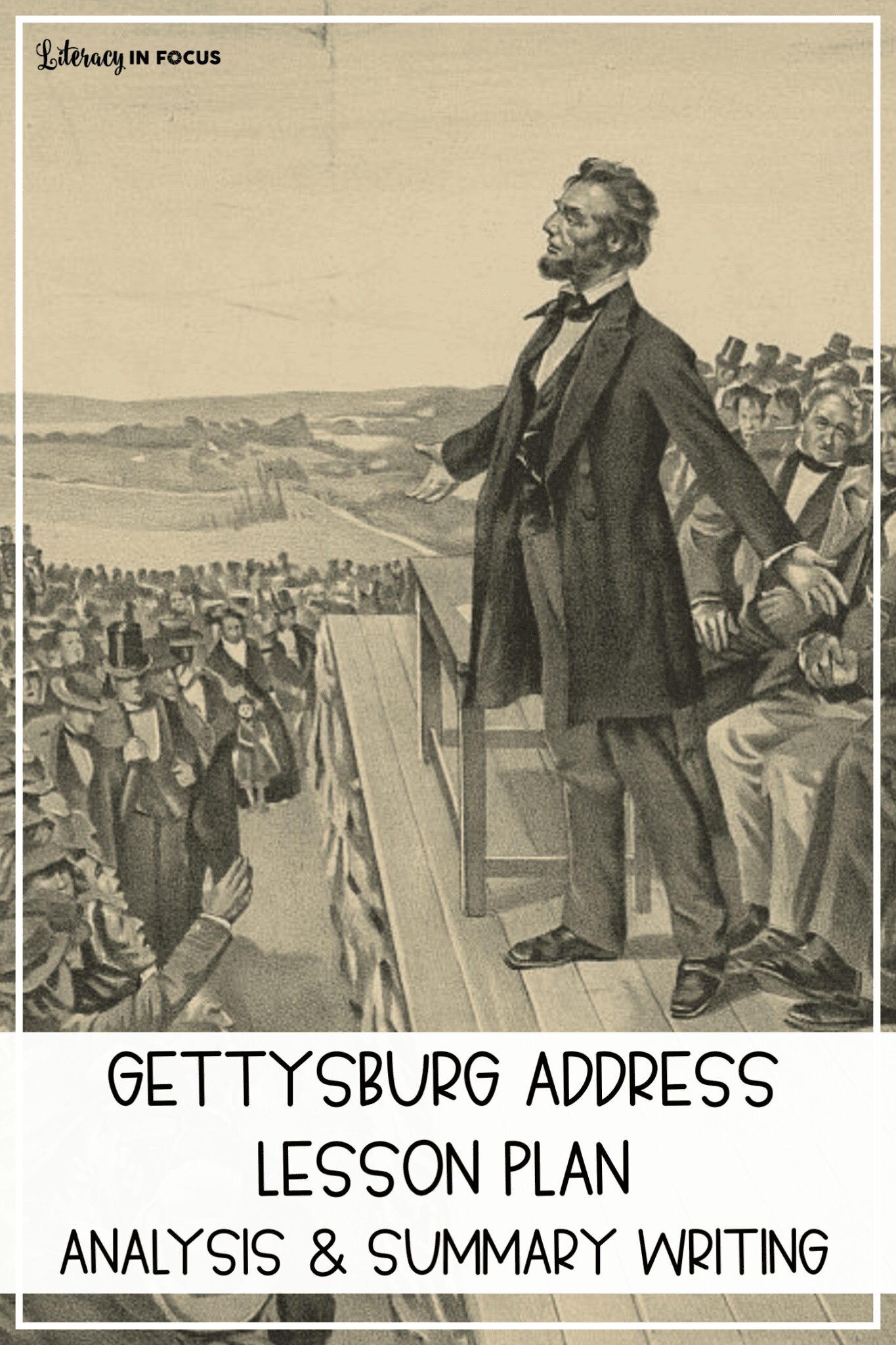
Four and a half months after the Battle of Gettysburg in 1863, President Lincoln delivered one of his most famous speeches, the Gettysburg Address. The speech only lasted two minutes, but its impact was tremendous. In order to analyze the significance and power of Lincoln’s words, students first need to be able to write an accurate summary. The lesson plan described below guides students through the summary writing process for Lincoln’s Gettysburg Address.
OBJECTIVE
At the conclusion of the lesson, students will be able to write a comprehensive summary of Lincoln’s Gettysburg Address in their own words with 80% or higher accuracy.
MATERIALS
- YouTube Video: Lincoln’s Gettysburg Address (2:48)
- Copy of Lincoln’s Gettysburg Address broken down into four passages with space for student annotations. *Optional: Click here to download the printable and digital Gettysburg Address teaching materials that correspond with this lesson from Literacy in Focus on TpT.

ANTICIPATORY SET
- Watch the short YouTube video: Lincoln’s Gettysburg Address (2:25)
GUIDED PRACTICE
- In order to write an accurate summary of Lincoln’s Gettysburg Address, students will need to break down each passage using who, what, when, where, and why questioning. (SEE BELOW)
- Complete the first two passages together as a class using the guided questions provided below.
- Write a one-sentence summary after recording who, what, when, where, and why for each passage.


INDEPENDENT PRACTICE
- Working independently, students record who, what, when, where, and why followed by a one-sentence summary for the last two passages of Lincoln’s Gettysburg Address.


ASSESSMENT
- Students combine their one-sentence summary of each passage to write a comprehensive summary of Lincoln’s Gettysburg Address. The summary should be written in their own words with 80% or higher accuracy.

COMMON CORE STANDARDS
- CCSS.ELA-LITERACY.CCRA.R.2
Determine central ideas or themes of a text and analyze their development; summarize the key supporting details and ideas. - CCSS.ELA-LITERACY.CCRA.R.5
Analyze the structure of texts, including how specific sentences, paragraphs, and larger portions of the text (e.g., a section, chapter, scene, or stanza) relate to each other and the whole. - CCSS.ELA-LITERACY.RH.6-8.2
Determine the central ideas or information of a primary or secondary source; provide an accurate summary of the source distinct from prior knowledge or opinions.
“I cannot say enough about what an amazing resource this is!!! This is close reading as its finest!! Every single activity is well-thought out and scaffolds perfectly. I followed the instructions that came with it and I was amazed at the comprehension that was flowing through my students by the time we got to the summary phase. Thank you times a million!”



